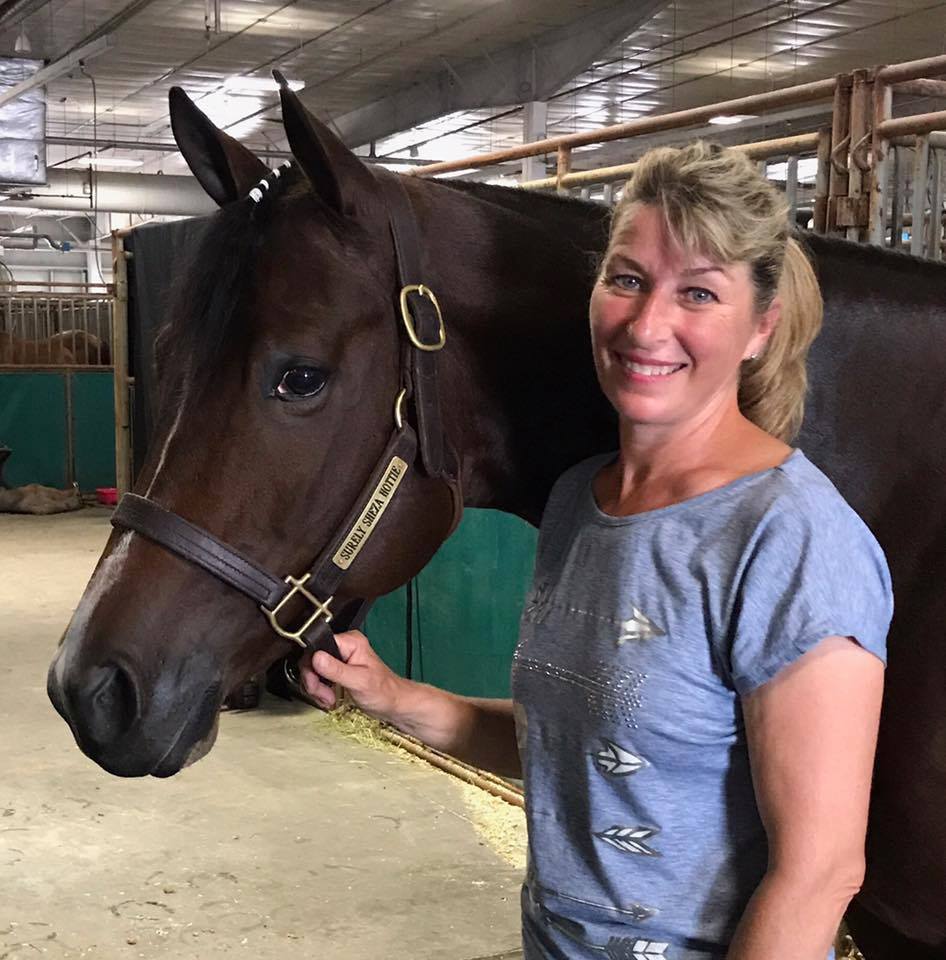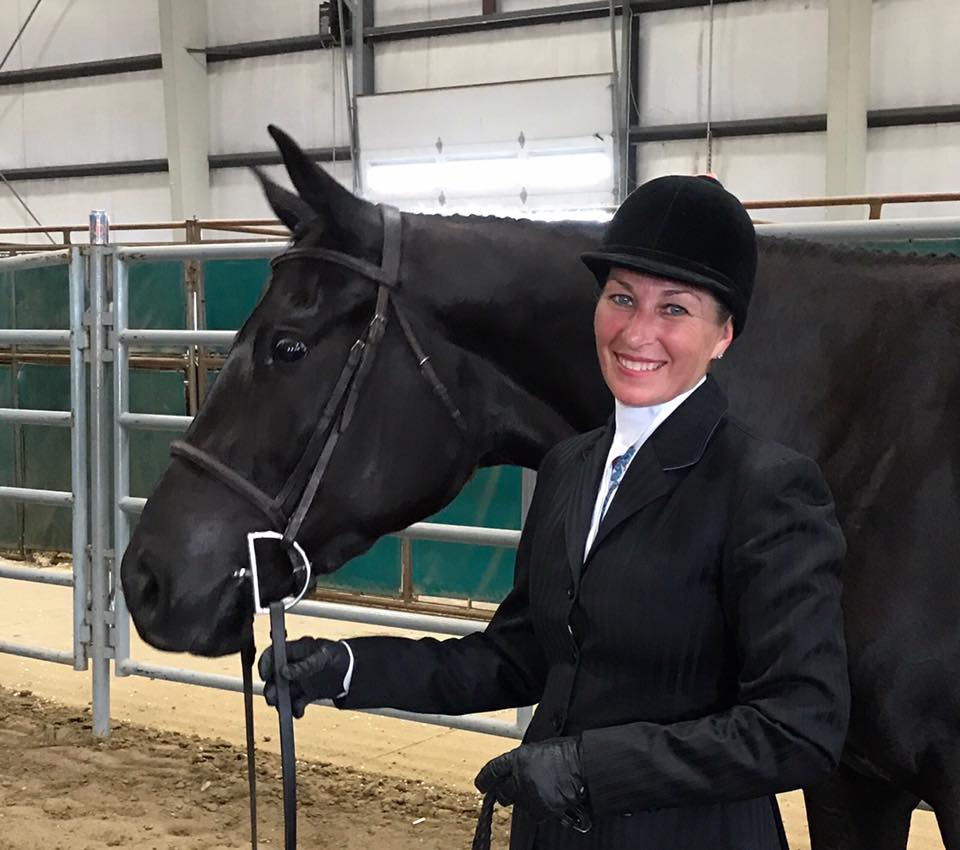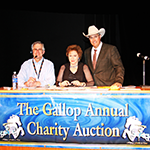If you’ve been showing horses long enough, you have experienced that embarrassed and infuriating feeling of being pulled into the center of the ring during a class and made to stand in a solo row of shame while the rail work completes.
Or you may have shown a horse that cheats, tries to reverse on its own or anticipates the announcer’s calls, moves faster than asked or runs through your legs or bridle.
Perhaps your experience is a horse that won’t stand still at the first cone in a pattern class or bites your hand during showmanship. So, now you have a show horse with a significant problem.
We spoke with top trainers in the industry on what to expect when you take your problemed show horse to a trainer to be fixed.
Talk About Timeline
 We all want a quick fix in life whether it is with getting in shape, learning a new language or house-training a new puppy. However, our experts iterate that is not usually the case when a trainer agrees to take on a horse beset with troubles. Multiple AQHA Congress and World Champion Trainer Kellie Hinely of Trendsetter Performance Horses (TPH) located in Chino Hills, California, agrees that a deadline for correcting an issue cannot always be predicted.
We all want a quick fix in life whether it is with getting in shape, learning a new language or house-training a new puppy. However, our experts iterate that is not usually the case when a trainer agrees to take on a horse beset with troubles. Multiple AQHA Congress and World Champion Trainer Kellie Hinely of Trendsetter Performance Horses (TPH) located in Chino Hills, California, agrees that a deadline for correcting an issue cannot always be predicted.
When a horse with problems in the show ring comes to TPH, Hinely and her associate trainer, Deann Hudson, take some time to evaluate the seriousness of the situation. Hinely explains, “I talk to new clients about their goals and explain how I will address the problems. Horse training isn’t a science, so when one approach doesn’t work, I will try another and then another until we find something that works. I don’t think there can be an exact timeline since each horse is different.”
However, she understands that clients like to have an estimate of what to expect. Hinely believes honesty is the best policy between customer and trainer. She states that she, “would be open to giving a specific time in that if this doesn’t get better by a certain date, then I might not be able to fix it.”
Jennifer Burton, also a Multiple AQHA World and Congress Champion trainer, agrees, “Depending on the degree of the problem, early stages may be fixed in 30 to 90 days. I believe that it should be the communication between the trainer and owner to determine the time frame for the problem to be fixed.
You Are Not Alone
Having a nice horse with an issue that evolves in the show ring can be disheartening and may suck the fun out of showing. It can often feel very isolating like you are the only one. This is a misnomer. Many horses, for various reasons demonstrate bad habits at horse shows and seeking professional help is often the best way not to feel helpless or alone.
Hinley says, “The most common problem I see with non-pro horses is that they learn to cheat in the show pen. Whether it be the western pleasure where the horse tries to reverse on its own and listen to the announcer, or a western rider that leans around the corners and/or tries to change leads on their own or with too much speed.”
The key word here is common.
Burton, also a decorated reining trainer explains, “The most common problems I see are caused by a lack of communication between horse and rider.” This repetition of disconnect can create bad habits that will emerge in the show ring when the rider is less able to correct a problem quickly.
Burton continues, “Not always, but this miscommunication is most of the time caused by lack of experience or knowledge of the rider.” She mentions that with proper training and coaching, many issues like this can be resolved. However, it is vital to seek help as soon as possible.
What to Expect in Corrections and Conversations
 Burton, who hails from Grayslake, Illinois sums her assessment of the issue with a conversation. She states, “My first suggestion from trainer to non-pro would be to identify where the problem is coming from to determine the first step to fixing it.” These conversations are not always easy to have or to hear. No one likes being told that they may be the root of an issue, but if progress is to be made, open-mindedness and listening skills are mandatory.
Burton, who hails from Grayslake, Illinois sums her assessment of the issue with a conversation. She states, “My first suggestion from trainer to non-pro would be to identify where the problem is coming from to determine the first step to fixing it.” These conversations are not always easy to have or to hear. No one likes being told that they may be the root of an issue, but if progress is to be made, open-mindedness and listening skills are mandatory.
Clients should expect their trainers to be honest and trainers should feel comfortable telling their customers unsavory news. This way, a positive working relationship can be formed, and all parties will benefit, mostly the horse in question.
Burton explains, “From the beginning, try to keep an open relationship in communication between client and trainer so that difficult conversations are not hard to have. Sometimes negative information is not always negative. In most cases, it is the trainer looking out for the owner’s best interest.”
Hinely wholeheartedly agrees, and she admits, “Difficult news is my downfall. Those that know me know that I like to live in a world where ‘yes’ is the only answer and everyone smiles. With that said, I also feel that it’s important to be honest with customers. I try to call and not text with negative news. Also, if I’m not getting the job done, I try to recommend another professional that I trust to send the horse to.”
Help is the Answer
 Both professionals have experienced a variety of problems with countless horses. And sometimes just different thinking and a small team can help to retrain issues that rear up in the show pen.
Both professionals have experienced a variety of problems with countless horses. And sometimes just different thinking and a small team can help to retrain issues that rear up in the show pen.
Hinely recalls a particular situation, “I had a horse that would ignore hand and leg cues when he showed. I don’t know how he was so smart, but he was. We would haul him to a few local arenas and hang his tail and bring a megaphone. He would think he was showing, and I reminded him that he wasn’t over and over. He’s now successfully showing and behaving.”
She also suggests that to maintain success in the show ring, especially when dealing with a horse that has or has recently had show-ring problems, having a professional’s hand is very important. She states, “I suggest letting the trainer warm up the horse as well as showing to keep the horse tuned up.”
 Burton remembers her particular challenge with a show horse. She describes, “a small problem with a customer’s horse was as simple as not walking when being showed. The problem in this circumstance was caused by the rider not being experienced enough in the show prep working on the walk. The rider thought by loping a lot and making the horse tired would make him walk when showing. In truth, it worked the opposite. By going out and only loping the horse off, they were teaching the horse not to walk, not realizing that horses learn from repetition. We spent the first 15 to 20 minutes on our show prep walking until the horse was comfortable and relaxed which in time taught the horse to walk in the show pen.”
Burton remembers her particular challenge with a show horse. She describes, “a small problem with a customer’s horse was as simple as not walking when being showed. The problem in this circumstance was caused by the rider not being experienced enough in the show prep working on the walk. The rider thought by loping a lot and making the horse tired would make him walk when showing. In truth, it worked the opposite. By going out and only loping the horse off, they were teaching the horse not to walk, not realizing that horses learn from repetition. We spent the first 15 to 20 minutes on our show prep walking until the horse was comfortable and relaxed which in time taught the horse to walk in the show pen.”
Show ring problems are common and not as devastating as they may feel at the time. Unique solutions, communication, patience and a professional’s guiding touch are the answers to bring back the fun in competition when dealing with a problem show horse.
About the Author: Maureen (Mo) West grew up on a large vegetable farm in rural Ontario, Canada where she began riding and showing quarter horses as a child. A former high school English teacher, she gave up that career to attain her dream of training and showing quarter horses professionally. Currently living in Alamo, California, she is constantly with her beloved dog, Crash, and enjoys running and fishing in her spare time.









